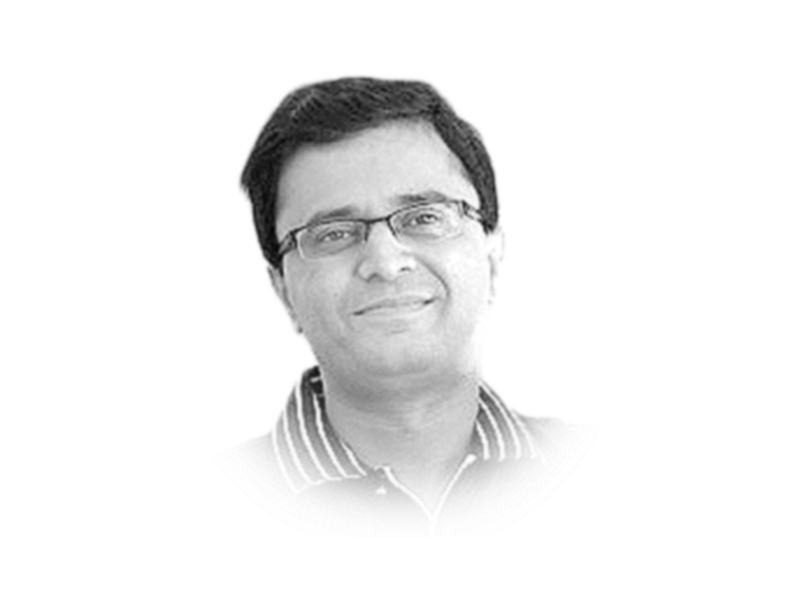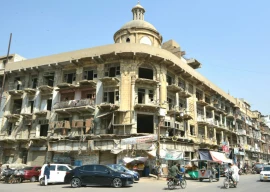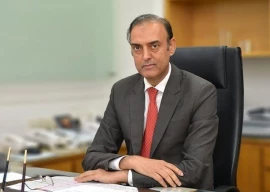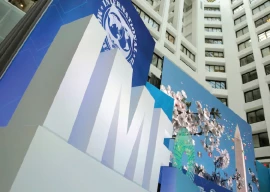
Consider the case of Javed. He is a skilled electronic repairman working as a driver in Lahore. He knows that if he opens an electronic repair shop in his home town, his business may take off as people in his town, have to travel over 25 miles to get their electronic items fixed. He needs about Rs500,000 to start his business. Masood is working as a bus conductor in Rawalpindi. He had a rickshaw before ill health forced him to sell it. All he needs now is about Rs200,000 to buy a CNG rickshaw, and start transporting people from his village to the nearest major inter-city bus stop, a journey which is presently done on foot. There are a lot of people like Javed and Masood around us. They have the skills to succeed in their respective business plans but nobody is willing to finance them. Banks do not lend to them because they cannot provide collateral. Microfinance institutions lend much smaller sums, which are not sufficient to start new businesses. People like Javed and Masood are all around us. They have valid income generating ideas and the required skills and experience, but nobody is willing to fund them. The average income per rupee of investment in their porposed businesses can be quite large when compared with a typical business that banks willingly lend to. Still, they remain unfunded. What’s the reason behind this inequality of opportunity?
The problem is that both the banks and microfinance lenders rely on the same inflexible debt contract. In a debt contract, a lender has no stake in the upside potential of an endeavour beyond the fixed payoff. Naturally, in a debt contract, a lender’s entire focus is on minimizing downside risk. That is, the objective is to fund the safest borrowers. Wealthy borrowers who can provide collateral and the government which can always print money to pay off its debt are the safest borrowers in the traditional banking sector. Microfinance institutions have taken the debt contract to the poor by developing extensive monitoring and selection networks; however, they cannot lend amounts large enough to start new businesses because poor have low debt repaying capacity.
In practice, we have a financial system that collects the country’s savings, and makes it available only to the wealthy who can provide collateral. Assuming that only the wealthy have income generating ideas is wrong. From a bank’s perspective, the wealthy may have the safest ideas as they provide collateral, but, surely, from the society’s perspective, they may not be the best income generating ideas. Ideally, the financial sector should select the best ideas irrespective of the level of wealth of the idea generator. However, the financial sector is in no position to do that. All it does is collateral management. Think about the loan officers approving bank loans. What do they know about the business being funded? Hardly anything.
In general, a lender has two major concerns: 1) The borrower may play unfair with the money 2) There is a downside from backing losers. In a debt contract, such concerns are mitigated by requiring collateral. But, the ability to reach the wider population is sacrificed as only a few can provide collateral.
Mitigating these concerns without collateral requires investment in a selection and monitoring network. And if collateral is dropped, and funding has to be large enough to support people like Javed and Masood, then one needs to move beyond the inflexible debt contract. The only way people like Javed and Masood can be funded is through a risk sharing or a mudarabah contract. The upside potential in a mudarabah contract can counter-weight the downside risk of business failure. Microfinance institutions have developed extensive monitoring and selection networks that allow for very high recovery rates. However, research indicates that micro lending does not bring about a meaningful change in the lives of the poor. Such lending is typically consumed as it is not large enough to start a new business. By sacrificing breadth in favour of depth, a mudarabah- type contract can be implemented. For example, instead of lending Rs50,000 to 20 people through a debt contract, lend Rs500,000 each to two people on mudarabah basis. The amount is large enough to start a small business, and the upside stake can potentially counter-weight the risk of failure. Hence, the selection and monitoring networks of micro lenders can be tweaked to experiment with mudarabah contracts.
Growth comes from realisation of opportunities. Behind every opportunity is an idea. For a country like Pakistan, ideas that Javed and Masood have are representative of our untapped growth potential. For our sake, we need to tap this potential. And, it is not going to happen through the inflexible debt contract. The question is: is someone willing to try the risk sharing contract?
Published in The Express Tribune, May 28th, 2014.
Like Opinion & Editorial on Facebook, follow @ETOpEd on Twitter to receive all updates on all our daily pieces.
COMMENTS (21)
Comments are moderated and generally will be posted if they are on-topic and not abusive.
For more information, please see our Comments FAQ
1725523665-0/Minecraft-Movie-(1)1725523665-0-405x300.webp)



1732086766-0/BeFunky-collage-(74)1732086766-0-165x106.webp)

1732084432-0/Untitled-design-(63)1732084432-0-270x192.webp)










@ Hugh Sinclair.
Good points. High interest rates being charged is the direct result of trying to take the inflexible debt contract to the poor. The monitoring and selection cost (operating cost) of microfinance lenders is high because of the large number of very samll borrowers. They have no choice but to give out a large number of small loans (as opposed to a few large ones) because a debt contract does not give anything to the lender on the upside (beyond the fixed payoff). So, the lenders try to lower the risks by spreading it over a large number of borrowers. In other words, the lenders are stuck between a rock and a hard place. In my opinion, the only way forward is to move beyond the inflexible debt contract, and try microfinance venture capital in which the lender keeps a share in the upside as well. That upside can counter the downside risk of failure, and fewer borrowers in venture capital verison would lower operating costs as well.
@Hammad Siddiqi: Thanks for the clarification. What incentive or potential loss does the borrower faces under such a setting? With majority of the small businesses having minimum to no documentation for sales or purchase orders, monitoring may not be costly, but it wont reveal the true health of the business. The borrower will show losses on paper, and misappropriate the funds. This is why small businesses in developing countries are much risk borrowers than those in developed countries where detailed documentation is available, thanks to taxation laws and inspections.
I am not trying to undermine your hypothesis here, I think it is a great idea and has potential for being successful initiative. But such issues are better to be discussed on table and possibly resolved, than getting scammed by small business owners and losing confidence of the financial sector.
P.s: I used A N as name above.
@AN. This is a reply to AN's concerns: A large number of microfinance providers rely on individual liabilty loans, and even when there is group liability, the lenders have individual monitors who go door to door knocking and collecting payment. This individual monitoring is very costly. That's why microfinance lenders charge very high interest rates. With fewer borrowers, less monitors are needed. Also, monitoring a samll business is not as hard as you are imagining it to be. Figuring out the total sales of a tandoor for example is quite easy. Just count the number of bags of flour purchased or the rotis sold ramdonly for a couple of days over a month, and you will have a very good idea. So, with fewer monitors, the monioring cost would be a lot lower actually then the current monitoring costs with a large number of borrowers. The point is one needs to start small, learn from mistakes, and improve. Otherwise, we will be forever stuck with the inflexible debt contract with little hope left for Pakistan.
The author's premise is astute. Ideas may not flourish due to lack of capital. The provision of capital via rigid debt-contracts typically offered by microfinance institutions has limitations, and is perhaps partly responsible for the lack of "meaningful change in the lives of the poor". But could a simpler explanation also explain this: the interest rates charged? The viability of the micro-enterprise is determined by the incremental increase in income net of the incremental cost of interest. If interest is too high, might we expect such poor overall impact?
I have been analysing the interest rates charged microfinance institutions. In some cases the total interest costs exceeds 150% per year (Mozambique, see link below). In many cases it exceeds 100%. The author suggests that the returns of such enterprises "can be quite large". Are they large enough to comfortably repay interest rates exceeding 100% per year in anything other than a few isolated cases? And even a 150% return in Mozambique would only break-even - it would not actually increase the wealth of the client. So, my question is simply this: how many micro-enterprises are likely to consistently generate such staggering returns to be able to genuinely benefit from such loans?
Naturally the banks are adept at citing the few success cases on their websites, and less adept at reporting on the (frankly pathetic) results of widespread research on microfinance upon poverty. But is this any different to promoting a national lottery as a poverty-reduction tool on the basis of the few lucky winners?
Perhaps if we stopped over-charging the poor for loans we might expect a slightly more impressive result. And if such banks are unable to cover their operating costs without charging such rates, should such banks even exist? Remember, many clients may not understand the subtle pricing strategies used by banks (often bordering on deception), nor be able to read the fine print of the contracts they sign. Perhaps the ultimate problem lies with the regulators that permit such activities?
Regarding the comment by Ana that microfinance in Bangladesh has "done wonders", perhaps she could comment on the latest research by the World Bank, traditional supporters of microfinance, which suggests it's impact is so small as to be almost meaningless (but at least positive!).
http://www.e-mfp.eu/blog/measuring-success-microfinance
http://www.mftransparency.org/microfinance-pricing/mozambique/005-BOM
microfinance by Grameen have done wonders for the bangladeshi economy.. it helped many people get out of poverty
The proposed solution in the op-ed essentially counters itself. Here is why:
Modarba contract is merely a risk-sharing agreement. There still needs to be a mechanism for monitoring the borrower. This has been done previously by Micro-finance institutions by borrowing to groups of individuals and relying on peer pressure among them. This breadth of borrowing offers monitoring accountability.
If depth of loans needs to be achieved, the number of borrowers need to be decreased. This would in turn result in poor monitoring and accountability, resulting in defaults and misappropriation of funds.
So the proposed solution solves one issue with traditional lending practice, but creates another major issue. I fail to see how it is an improvement over the current practice.
In Pakistan, there is no productive use of societal savings. It's not invested in growth or economic expansion but in 'corner plots' in suburban communities.
it's a very good article.
@Kahsif Ahmed:
You should have simply stated instead what Umar Khitab wrote, Dr Siddiqi simply forgot to tell us what should the Bank do to loan the money to the driver and the conductor, who are the dreamers but have no credible business plans nor the experience of an entrepreneur?
Rex Minor :
i like your artical
very good article
@Rex Minor. Rex Minor should be asked where did he learn to read? The article is obviously about domestic debt, and all gorvernments in Pakistan have and have been printing money to payoff domestic debt. @Np. Np should be asked to do his research and find out what proportion of bank financing goes to borrowers like Masood and Javed. Almost zero.@Shehzad. Shehsad should be asked to do his research also and find out why microfinance insitutions across the globe fail to have any impact on poverty. Because, they lend small amount of money, which gets used up for consumption. I think this is a very insightful article, and policy makers should pay heed to it, for Pakistan's sake.
Rex Minor,
Do you have an economics degree yourself?
@dr gulnar:
The solution for the case you described is very hopeless, he should either join the police service at at worst join the military, the only requirement from this bod will be to shoot at others to survive!
Rex Minor.
the author rightly points out an aspect of the problem faced by a technical person from from the economic hub of the country,starting from Karachi to Islamabad,roughly enjoying the eighty person economic activity of the nation.what about a person,who dwells hundreds of kilometers away from the market,who is unskilled,who can,t read and write,who can't work for the whole year with a continuity because he hails from from a mountainous village and he to join his family back to buy them food,gather fire wood for the kitchen and dry gross for the cattle to eat during the cold season . if a person is worth sympathy being unemployed in any city.what about a person coming from a village being infamiliar with culture,survives against all odds besides a strong allegation that he belongs to the land of terrorists.every body teases but more by the police like ssp chaudhry of Karachi, despite of the fact that as said by gen(ret) hameed gul as soldier of first line defense.
@Np:
Why not ask Dr Siddiqi how he got his certificates in Economics. The Government paying back its debts by printing moneyß He is probably referring to the practice of American administration. Mr Nawaz Sharif Government can definitely not print money to pay back its debts to IMF?.
Rex Minor.
On the other end of the spectrum you IFC, Axion Venture Labs, Microsaves and similar all dying to find deal in which they can put the money in and show to the world what great work they have done to prevent poverty. Fund managers are dying to make exit plans against those deals.
I do not understand - why would the rickshaw not serve as a collateral i.e. rickshaw is owned by the bank and as the loan is paid off by Masood, he becomes owner of rickshaw? Ditto with the electronic workshop. Loans for income generating asset creation ( as distinct for wedding of a child) are fairly standard business practice and by no means require the esoteric structure that the author is advocating.
Ask Masood how he got his first rickshaw ( which he sold) and he willprobably tell you a bank funded it.
They have the skills to succeed in their respective business plans....AND the wealthy borrowers who can provide the collateral and the Government which can always pay back by printing money....? .I have not understood the aforesaid statements of Dr Siddiqi, the associate Professor of Economics, concerning the income generating plans.? Both Masood and Javed do not have ideas of a business plan but simply a dream which most in the world have?
Rex Minor .
There are so many things in this op-ed that are either incorrect or present a small part of the picture rather than a complete one, so there is little point in attempting to counter it. However, couple of points deserve mention. the variation on the micro-lending model that the author is advocating is the precise reason why micro-lenders exist, that is, to spread risk over a large number of borrowers; if the quantity of loans is taken away, then these are no longer contracts that can be extended to a borrower without any collateral. And yes, banks overall, and most people in general, lack the insight to assess the viability of idea alone - if it were that straight-forward, then one would have capitalized on that idea rather than giving someone else loan for it. There is also some misunderstanding on the part of the author as per the reasons for assessing loan-worthiness - it's certainly not just restricted to the risk factor. However, there is little need to provide those reasons here as the author is quite a bit off the mark in his understanding of the mechanism.
Javed and Masood cannot avail loans from a commercial bank as the system is highly skewed in favor of mighty, and powerful. Had they been part of the civil-military establishment, or at least connected to them, it might have been much easier for them to avail a loan and then default on it. In George Orwell's Animal Farm, "some are more equal than other." Orwell was a police officer in Lahore when he wrote this, and had the first hand experience of things. Please read Shaukat Siddiqui's Khudda Ki Basti if one is reluctant to read George Orwell considering him a colonial mindset.